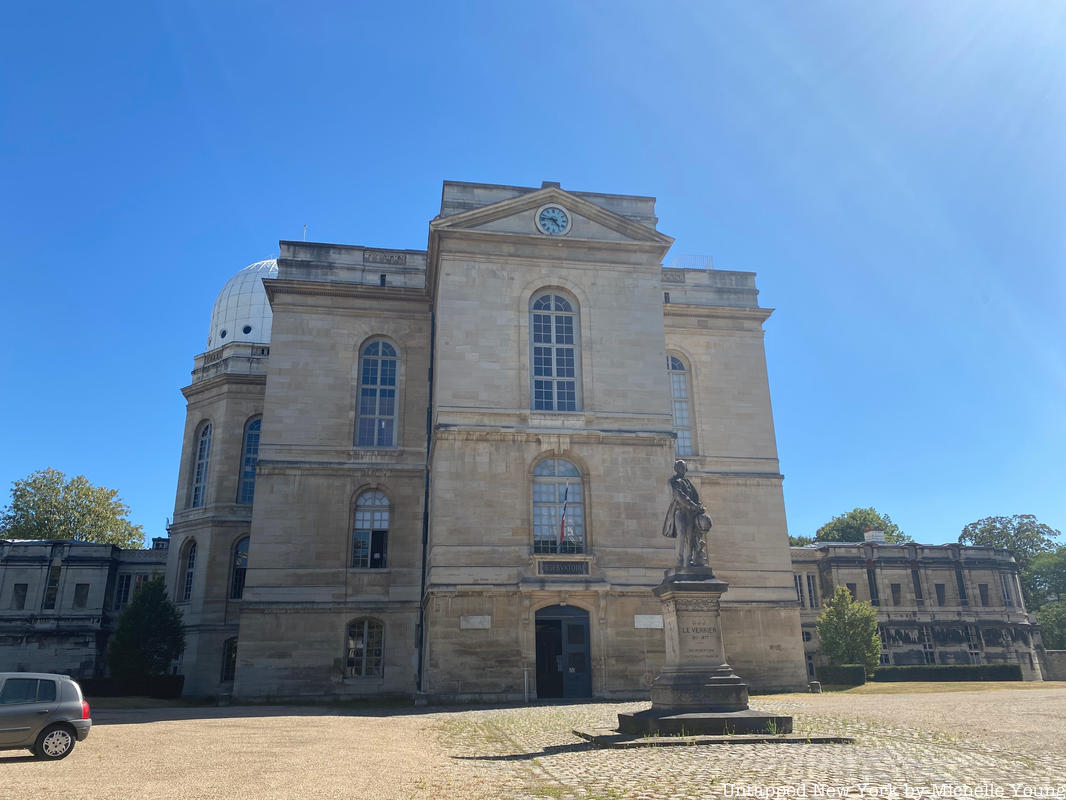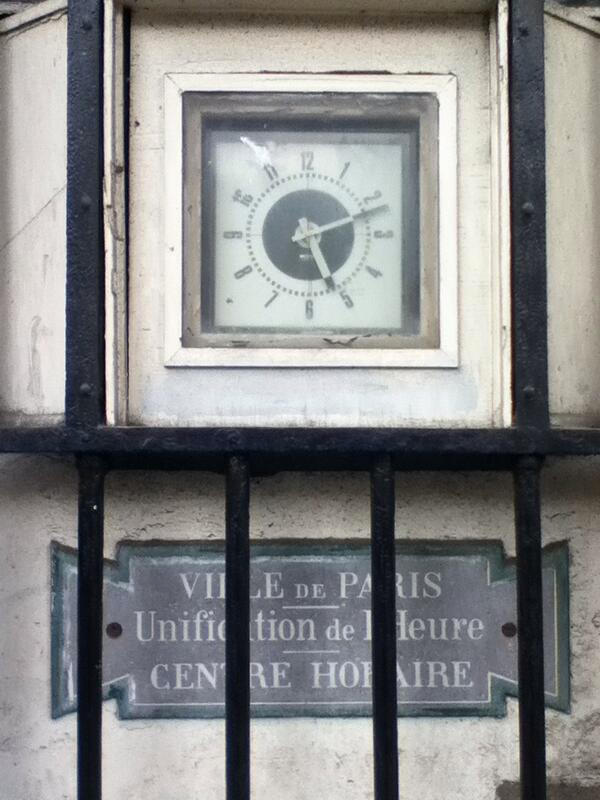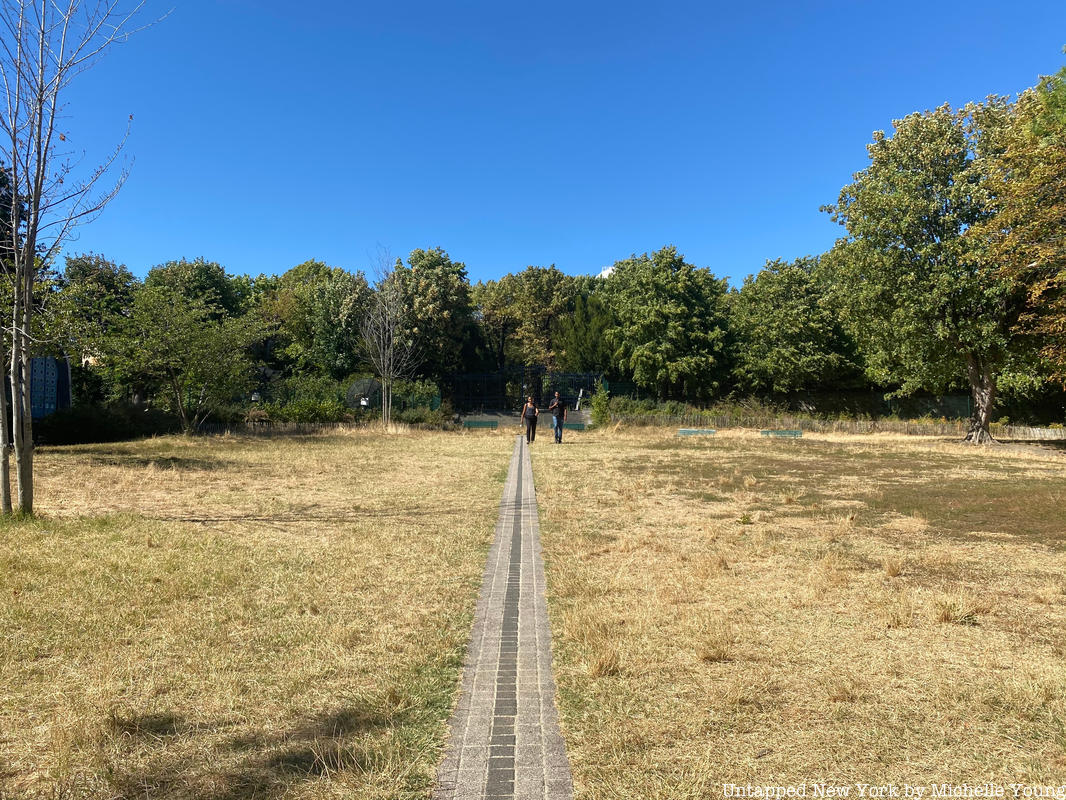 Paris Observatory
Paris Observatory
After reading our Daily What?! on the 114-year old clock embedded in the sidewalk on Maiden Lane in New York City, Untapped Cities reader @meringuette asked us about this photograph via Twitter:
 Photo Courtesy of @meringuette
Photo Courtesy of @meringuette
“@untappedcities Any idea what this is? 4 avenue du Colonel Rol Tanguy (Denfert Rochereau) #Paris”
Turns out, until January 21st, 1902, each town in France had its own official time based on the sun. Time in France could be separated up to 4 minutes based on longitude. As you can imagine, this caused some logistical difficulties in the country. Clocks in train stations had to have two minute hands, one gave the local time, the other gave the time in Paris. This was not a problem isolated to France. New York City also had to reset its clocks to standardize time, causing one day in 1883 to have noon twice.
According to this website (translated into English), “In 1884, a French scientific congress voted to pass a unified time based on the prime meridian in Greenwich, but in France, nobody would adopt this system because it would have meant a surrender to the enemy: the British!”
 Meridian line in front of the Paris Observatory
Meridian line in front of the Paris Observatory
In 1902, the country adopted the time in Paris as the official time, known as the “heure de l’Observatoire.” Nearby this clock, which has since been removed since the publication of this article when the building was renovated, is the Paris Observatory. According to the Official Website of the Convention and Visitors Bureau of Paris, the observatory is “the origin point of the meridian in France, geodisic meridian (1729-Jacques Cassini) that crosses the country from Dunkerque to Perpignan (meridian used for the first map of France). It was in 1884 that an international convention adopted the meridian of Greenwich as the meridian of origin.”
Next, check out The Day That New York Had Two Noons, a Century After Losing 11 Days and 13 Unique NYC Sidewalk Installations





